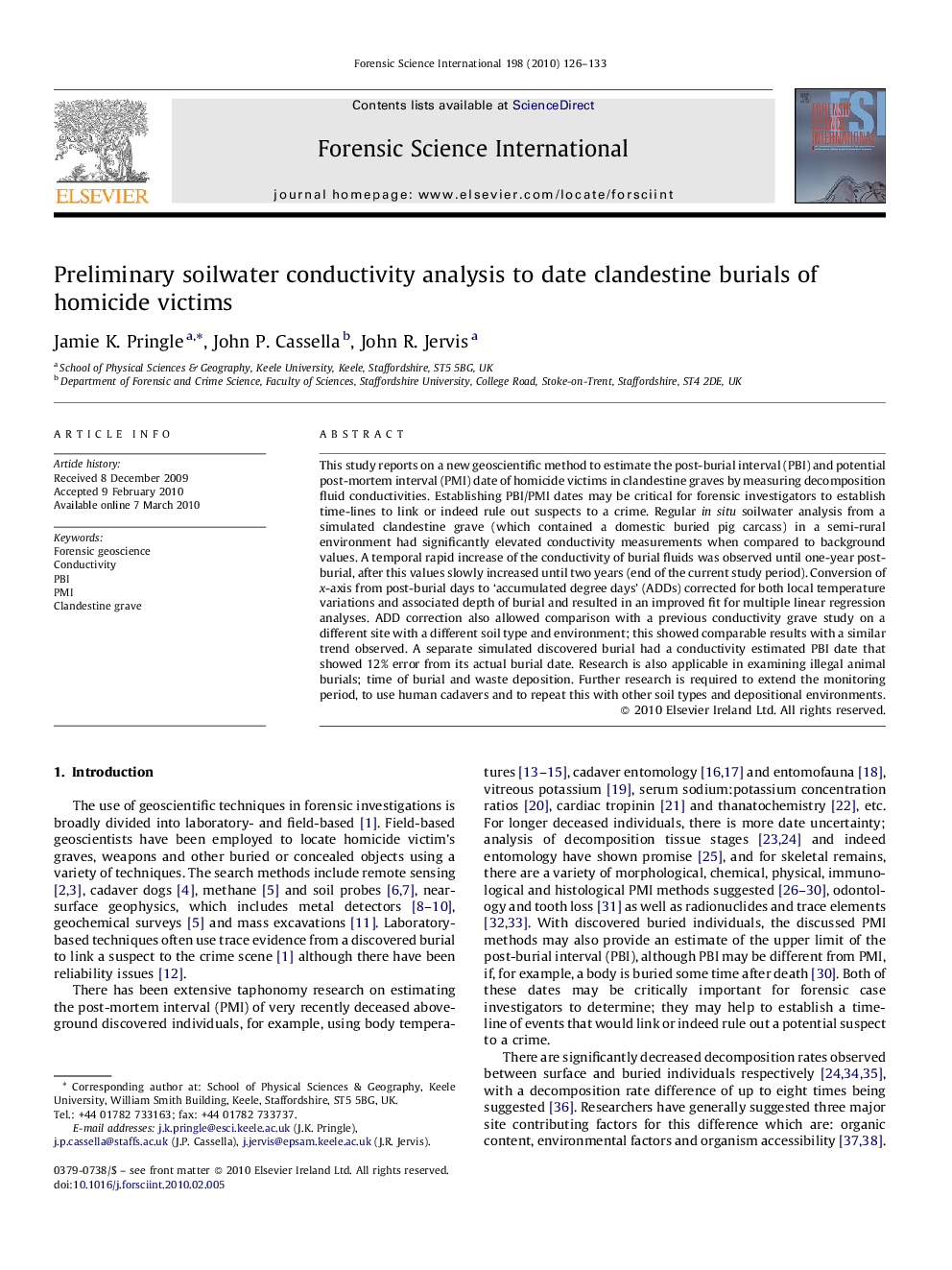| Article ID | Journal | Published Year | Pages | File Type |
|---|---|---|---|---|
| 97084 | Forensic Science International | 2010 | 8 Pages |
This study reports on a new geoscientific method to estimate the post-burial interval (PBI) and potential post-mortem interval (PMI) date of homicide victims in clandestine graves by measuring decomposition fluid conductivities. Establishing PBI/PMI dates may be critical for forensic investigators to establish time-lines to link or indeed rule out suspects to a crime. Regular in situ soilwater analysis from a simulated clandestine grave (which contained a domestic buried pig carcass) in a semi-rural environment had significantly elevated conductivity measurements when compared to background values. A temporal rapid increase of the conductivity of burial fluids was observed until one-year post-burial, after this values slowly increased until two years (end of the current study period). Conversion of x-axis from post-burial days to ‘accumulated degree days’ (ADDs) corrected for both local temperature variations and associated depth of burial and resulted in an improved fit for multiple linear regression analyses. ADD correction also allowed comparison with a previous conductivity grave study on a different site with a different soil type and environment; this showed comparable results with a similar trend observed. A separate simulated discovered burial had a conductivity estimated PBI date that showed 12% error from its actual burial date. Research is also applicable in examining illegal animal burials; time of burial and waste deposition. Further research is required to extend the monitoring period, to use human cadavers and to repeat this with other soil types and depositional environments.
